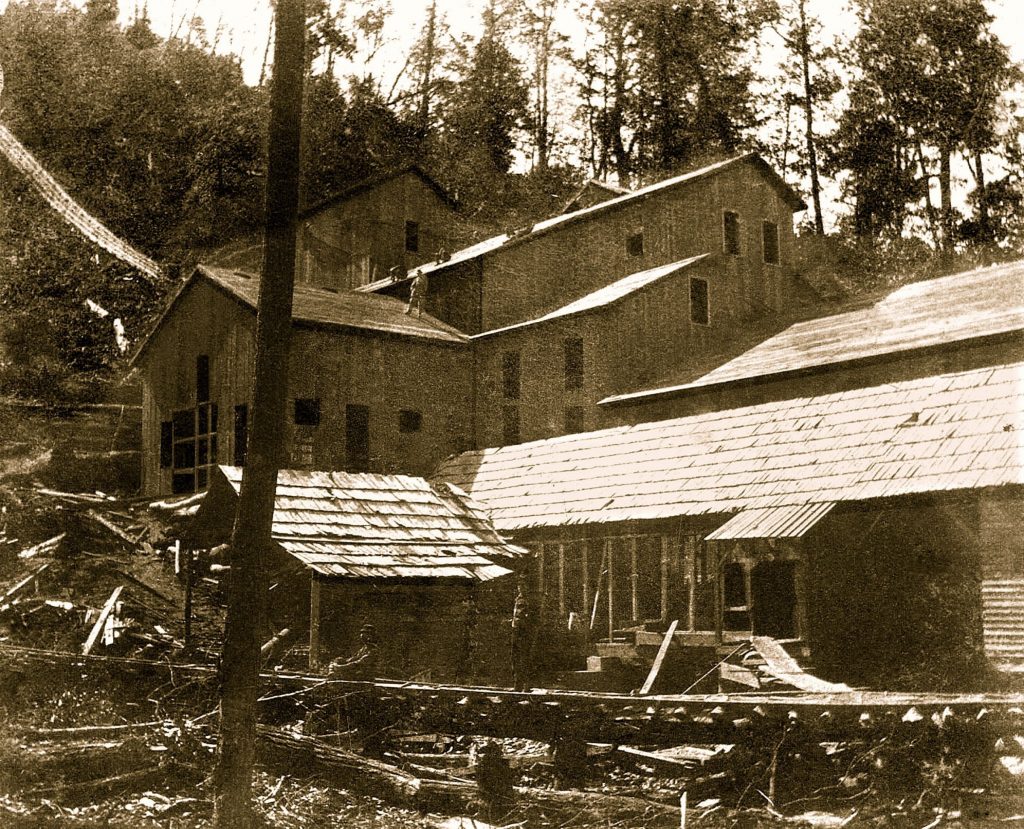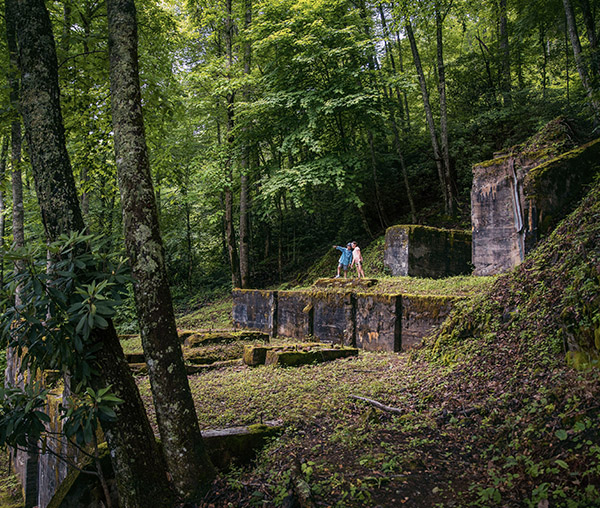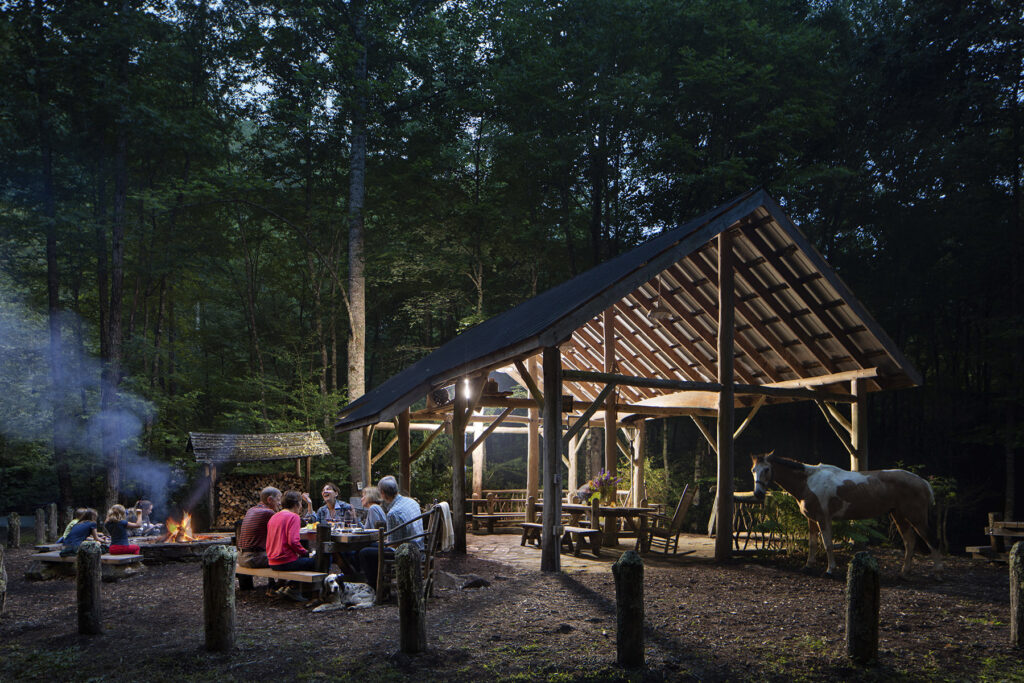Real Estate Holdings, LLC., Balsam Mountain Preserve, (“BMP”) provides to you this website https://balsammountainpreserve.com (“Web Site”) for your personal informational, educational and entertainment use. The following Terms of Use govern your access and use of this Web Site. Please read these Terms of Use carefully before using this Web Site. Also, specific terms and conditions may apply to specific Content (as defined below) on or available through this Web Site (the “Content”) and to specific content, data, materials, or information you may upload, submit and/or publish to the Web Site (“User Content”) or transactions conducted through this Website. Such specific terms may be in addition to these Terms of Use or, where and then only to the extent expressly specified, may supersede these Terms of Use.
When used in these Terms of Use, “we” and “our” means BMP, and “you” and “your” refers to any individual, company or legal entity that accesses or otherwise uses this Web Site.
By accessing, browsing or using this Website, you agree to be bound by these Terms of Use and all terms and conditions contained or referenced herein or any additional terms and conditions set forth on this Web Site. If you do NOT agree to all of these terms, you should NOT access or use this Web Site.
These Terms of Use may be amended by BMP, in its sole discretion, at any time without notice to you. Such amended Terms of Use shall be effective upon posting. By continuing to access or use this Web Site, you will be deemed to have accepted such amendments. You are advised to regularly review any applicable terms and conditions.
BMP reserves the right to discontinue or make changes or updates with respect to the Web Site or the Content of the Web Site at any time without notice.
Personal information provided through this Web Site shall be used in accordance with BMP’s Privacy Policy https://balsammountainpreserve.com/privacy-policy/ and these Terms of Use are subject to the Privacy Policy as posted on this Web Site.
You acknowledge that all content on this Web Site, including the Web Site’s design, graphics, text, formatting, sounds, pictures, images, software, and other materials and information on this Website, and the selection and arrangement thereof (collectively, “Content”), are the property of BMP or its licensors, and are subject to and protected by United States and international copyright and other intellectual property laws and rights. All rights to Content not expressly granted in these Terms of Use are reserved to their respective intellectual property right owners. Except as expressly authorized in these Terms of Use or on the Web Site, you may not copy, reproduce, distribute, republish, download, perform, display, post, transmit, exploit, create derivative works or otherwise use any of the Content in any form or by any means, without the prior written authorization of BMP or the respective intellectual property rights owner. BMP authorizes you to view and download the Content only for personal, non-commercial use, provided that you keep intact all copyright and other proprietary notices contained in the original Content. You may not modify or adapt the Content in any way or otherwise use them for any public or commercial purposes. The trademarks, service marks, trade names, trade dress and logos (collectively, “Marks”) contained or described on this Web Site (including, without limitation, BMP) are the sole property of BMP and/or its licensors and may not be copied, imitated or otherwise used, in whole or in part, without the prior written authorization of BMP and/or its licensors. In addition, all page headers, custom graphics, button icons and scripts are Marks of BMP and may not be copied, imitated or otherwise used, in whole or in part, without the prior written authorization of BMP. BMP will enforce its intellectual property rights to the fullest extent of the law.
Links on the Web Site to third party websites are provided only as a convenience to you. If you use these links, you will leave the Web Site. BMP does not control or endorse any such third party websites. You agree that BMP and its affiliates will not be responsible or liable for any content, goods or services provided on or through these outside websites or for your use or inability to use such websites. You will use these links at your own risk. You are advised that other websites on the Internet, including third party websites linked from this Web Site, might contain material or information that some people may find offensive or inappropriate; or that is inaccurate, untrue, misleading or deceptive; or that is defamatory, libelous, infringing of others’ rights or otherwise unlawful. BMP expressly disclaims any responsibility for the content, legality, decency or accuracy of any information, and for any products and services, that appear on any third party website. BMP recommends that you make yourself aware of and read the legal and privacy notices of all other websites that you visit.
BMP strives to provide accurate and up-to-date material on this Web Site. However, we make no warranties or representations as to the accuracy or timeliness of the Content on this Web Site.
YOUR USE OF THE WEB SITE IS AT YOUR SOLE RISK. THE WEB SITE AND THE CONTENT CONTAINED ON THIS WEB SITE ARE PROVIDED ON AN “AS IS” AND “AS AVAILABLE” BASIS. BMP EXPRESSLY DISCLAIMS ALL WARRANTIES OF ANY KIND, WHETHER EXPRESS OR IMPLIED, INCLUDING, BUT NOT LIMITED TO THE IMPLIED WARRANTIES OF MERCHANTABILITY, FITNESS FOR A PARTICULAR PURPOSE AND NON-INFRINGEMENT. BMP MAKES NO WARRANTY THAT (I) THE WEB SITE WILL MEET YOUR REQUIREMENTS, (II) THE WEB SITE WILL BE UNINTERRUPTED, TIMELY, SECURE, OR ERROR-FREE, (III) THE RESULTS THAT MAY BE OBTAINED FROM THE USE OF THE WEB SITE WILL BE ACCURATE OR RELIABLE, (IV) THE WEB SITE IS FREE FROM VIRUSES OR OTHER HARMFUL COMPONENTS, OR (V) ANY ERRORS IN THE WEB SITE WILL BE CORRECTED. ANY MATERIAL DOWNLOADED OR OTHERWISE OBTAINED THROUGH THIS WEB SITE IS PROVIDED AT YOUR OWN RISK, AND YOU ARE SOLELY RESPONSIBLE FOR ANY DAMAGE TO YOUR COMPUTER SYSTEM OR LOSS OF DATA THAT RESULTS FROM YOUR USE OF THE WEB SITE, INCLUDING WITHOUT LIMITATION, DAMAGES RESULTING FROM COMPUTER VIRUSES.
SOME JURISDICTIONS MAY NOT PERMIT CERTAIN DISCLAIMERS OF WARRANTIES, SO SOME OF THE EXCLUSIONS ABOVE MAY NOT APPLY TO YOU. IN SUCH JURISDICTIONS, WE DISCLAIM WARRANTIES TO THE FULLEST EXTENT PERMITTED BY APPLICABLE LAW.
NEITHER BMP OR ITS AFFILIATES SHALL UNDER ANY CIRCUMSTANCES BE LIABLE FOR ANY DAMAGES OF ANY KIND ARISING OUT OF, IN CONNECTION WITH OR RELATING TO YOUR ACCESS TO, OR USE OF OR INABILITY TO USE THIS WEB SITE OR ANY MATERIAL, OR ANY OTHER WEBSITE YOU ACCESS THROUGH A LINK FROM THIS WEB SITE OR ANY INCORRECT OR INACCURATE INFORMATION ON THIS WEB SITE. THIS IS A COMPREHENSIVE LIMITATION OF LIABILITY THAT APPLIES TO ALL DAMAGES OF ANY KIND, INCLUDING ANY DIRECT, INDIRECT, SPECIAL, INCIDENTAL OR CONSEQUENTIAL DAMAGES (INCLUDING BUT NOT LIMITED TO PROPERTY DAMAGE, LOSS OF USE, LOSS OF DATA, LOSS OF BUSINESS, ECONOMIC LOSS OR LOSS OF PROFITS), WHETHER BASED ON BREACH OF CONTRACT, BREACH OF WARRANTY, TORT (INCLUDING NEGLIGENCE) OR OTHERWISE, EVEN IF BMP HAS BEEN ADVISED OF THE POSSIBILITY OF SUCH DAMAGE OR LOSS. TO THE MAXIMUM EXTENT PERMITTED BY APPLICABLE LAW, YOU EXPRESSLY WAIVE ALL CLAIMS AGAINST BMP AND ITS AFFILIATES AND THEIR OFFICERS, DIRECTORS, EMPLOYEES, SUPPLIERS, AND PROGRAMMERS THAT MAY ARISE FROM YOUR ACCESS OR USE OF THIS SITE.
You agree to indemnify, defend and hold harmless BMP and its affiliates against all claims, demands, causes of action, losses, expenses, damages and costs, including any reasonable attorneys’ fees, resulting or arising from or relating to your use of or conduct on the Web Site, any activity related to use of the Web Site by you, any message or material that you submit to, post on or transmit through the Web Site, your violation of these Terms of Use, your infringement or violation of any rights of another, or termination of your access to the Web Site.
If you have a dispute with one or more users, you release BMP and its affiliates from claims, demands and damages (actual and consequential) of every kind and nature, known and unknown, arising out of or in any way connected with such disputes.
As a condition of your use of this Web Site, you agree not to use the Web Site for any purpose that is unlawful or prohibited by these terms and conditions. You further agree that you are responsible for your use of and communications on the Web Site. You agree not to post on or transmit through this Web Site any unlawful, infringing, threatening, harassing, defamatory, vulgar, obscene, profane, indecent, offensive, hateful or otherwise objectionable material of any kind, including any material that encourages criminal conduct or conduct that would give rise to civil liability, violates the privacy rights of others, infringes others’ intellectual property rights or otherwise violates any applicable local, state, national or international law. You agree not to use this Web Site in any manner that interferes with its normal operation or with any other user’s use and enjoyment of the Site. You agree to use reasonable efforts to scan and remove any viruses or other contaminating or destructive features before submitting any material.
BMP reserves the right, in its sole discretion, to suspend or terminate your access to this Web Site and prohibit any and all current and future use of this Web Site (or any portion thereof) by you, if you fail to comply with any term or provision of these Terms of Use or your use is harmful to the interests of another user of this Web Site.
BMP reserves the right at any time and from time to time to modify or discontinue, temporarily or permanently, the Web Site (or any part thereof) with or without notice or consent. BMP and its affiliates shall have no responsibility or liability for failure to store or delete any Content or User Content submitted to the Web Site.
These Terms of Use shall be governed by, and construed in accordance with, the laws of the United States and the State of North Carolina, without giving effect to conflicts of law principles thereof. BMP makes no representations that the material and information on this Web Site are appropriate or available in all national locations or languages. You agree that any action at law or in equity arising from or relating to the use of this Web Site or to these Terms of Use shall be brought exclusively in the Federal or State Courts residing in North Carolina. You hereby consent and submit to personal jurisdiction in of such courts for the purposes of any action relating to this Web Site, your access or use thereof, or these Terms of Use, and to extra-territorial service of process.
If any provision of these Terms of Use is held to be unlawful, void, or for any reason unenforceable by a court of competent jurisdiction, then the invalid or unenforceable provision shall be replaced by a valid, enforceable provision that most closely matches the intent of the original provision, and the validity and enforceability of any remaining provisions shall not be affected.
The failure of BMP and its affiliates to enforce any part of these Terms of Use shall not constitute a waiver of such term or provision, and shall not be considered a waiver or limit BMP’s right thereafter to insist upon strict adherence to that term or any other provision of these Terms of Use.






